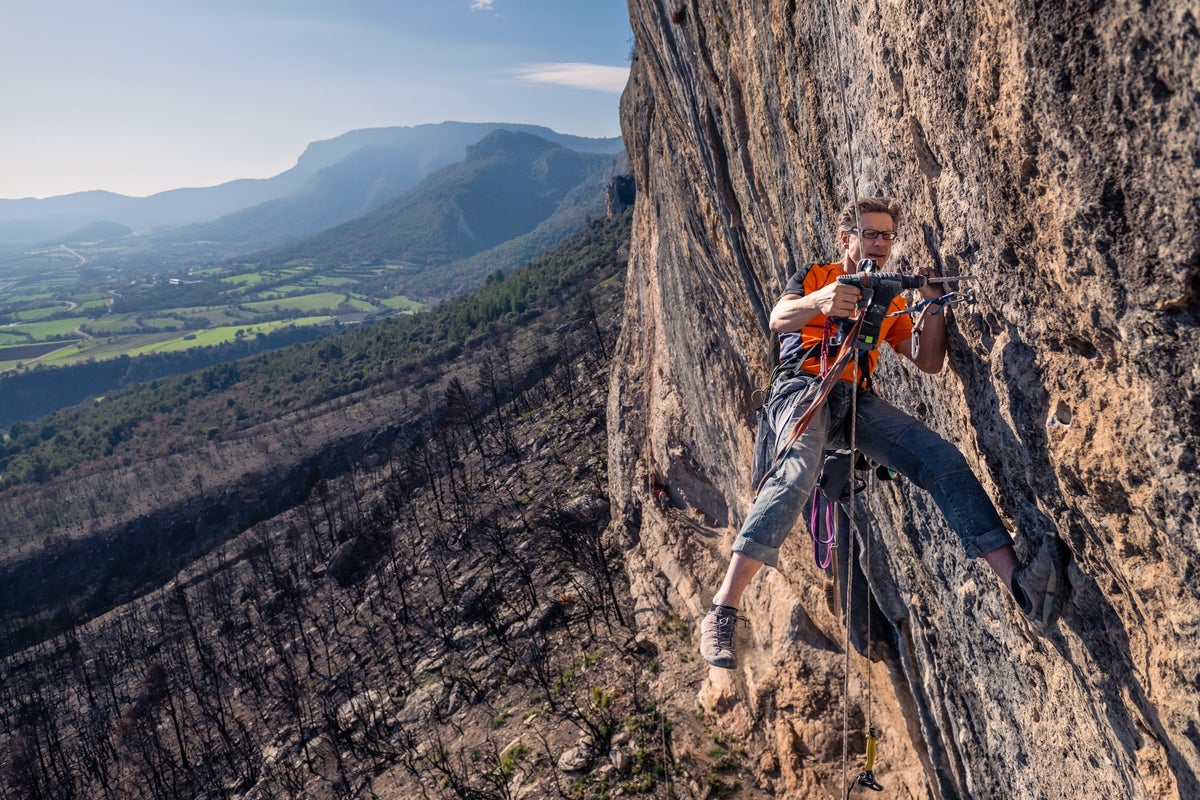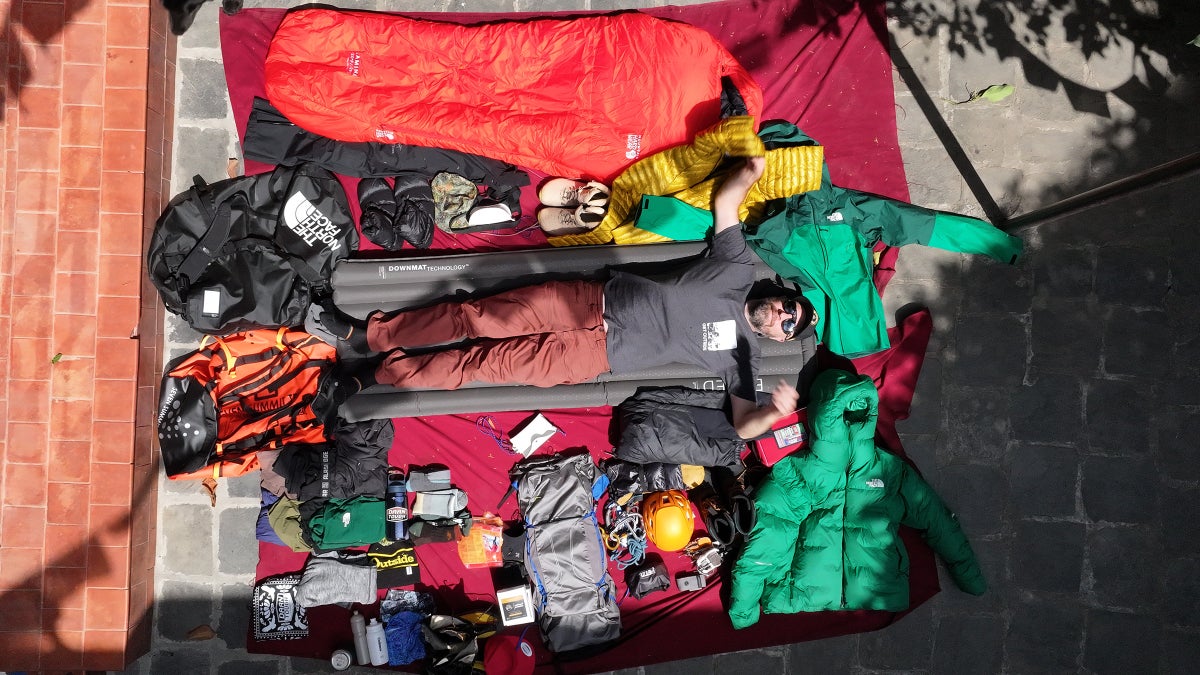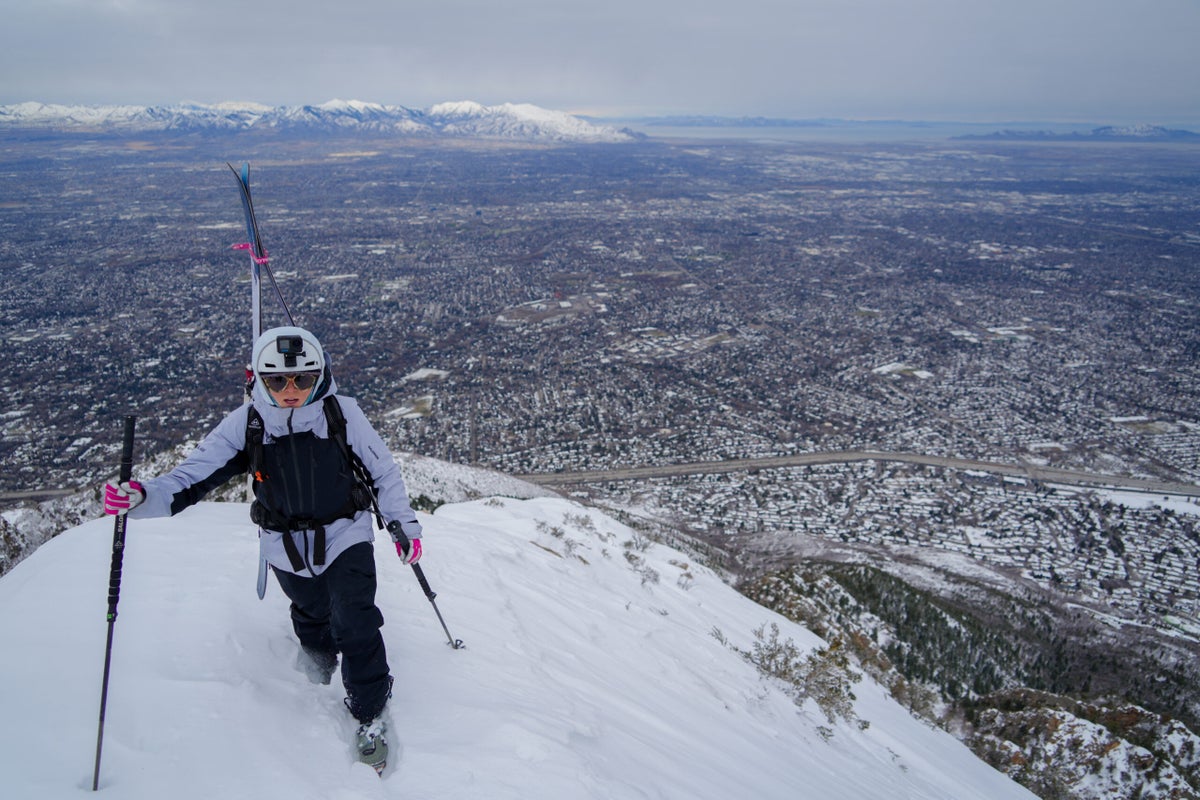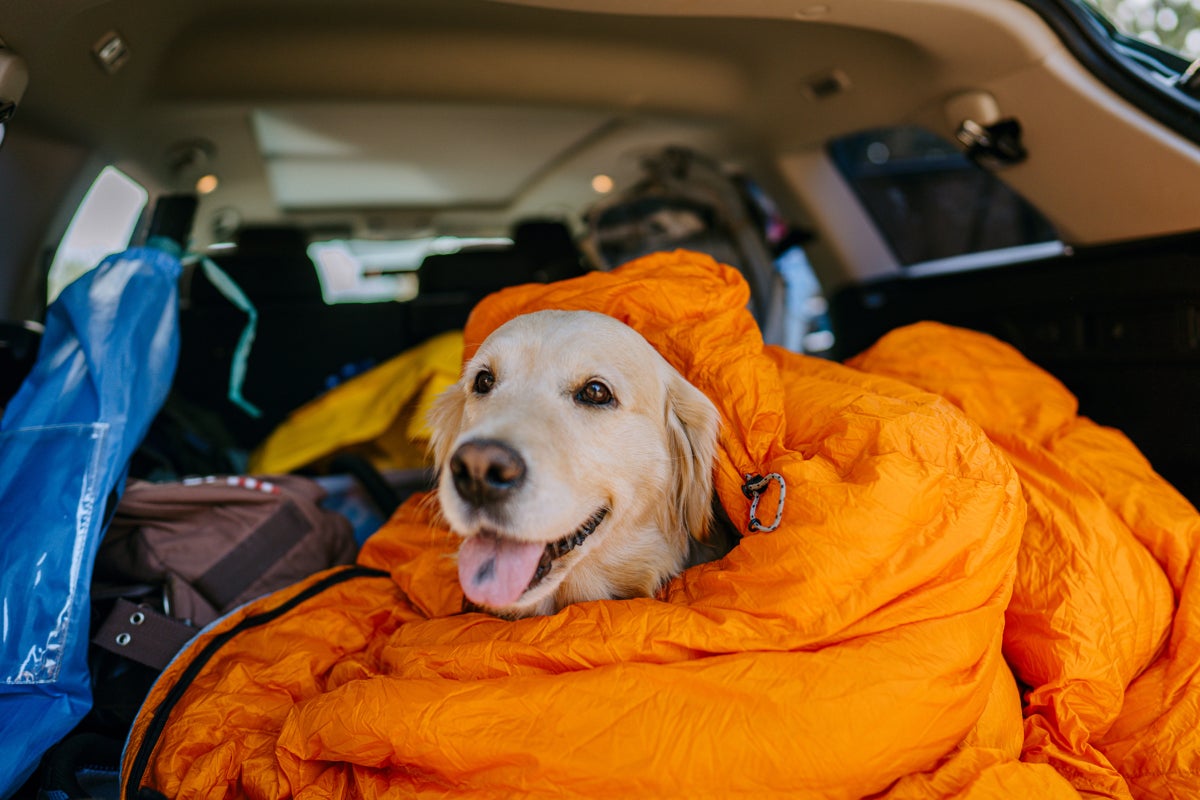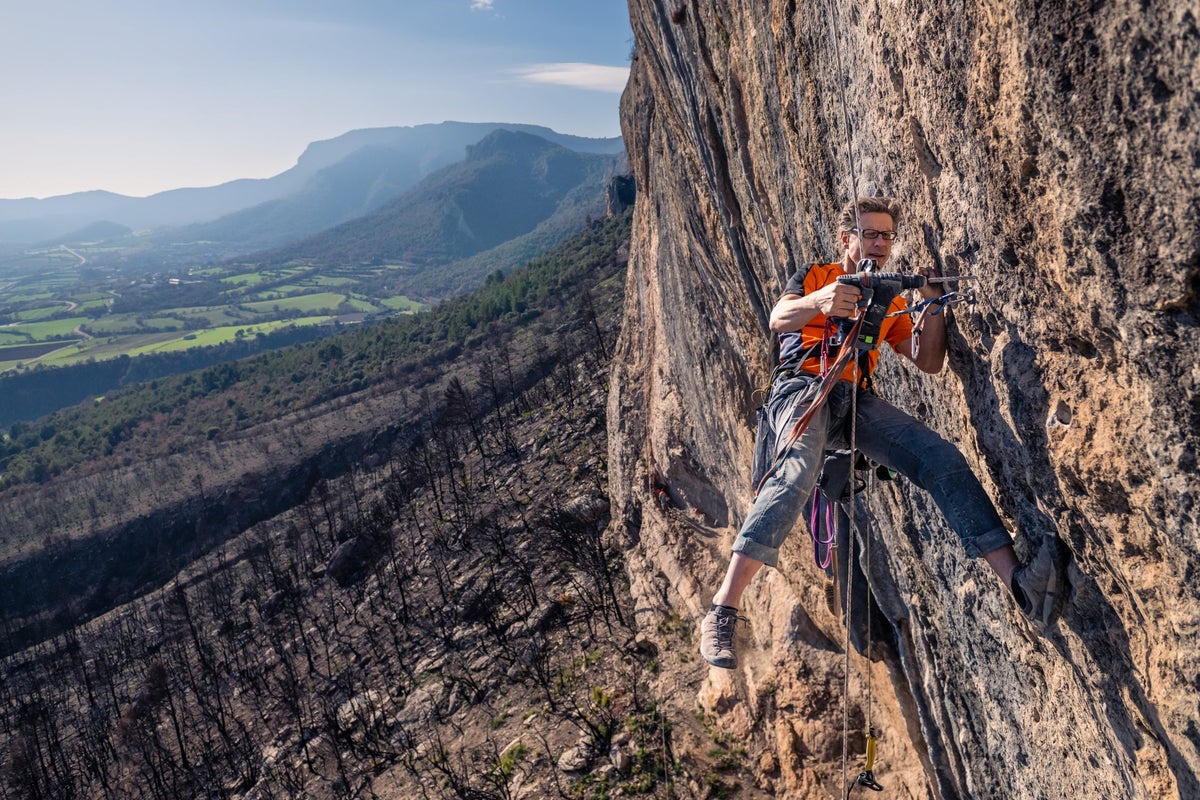
Every few minutes the helicopters whirred overhead, back and forth, bringing loads of water to quench the wildfire that burned in Colorado’s Clear Creek Canyon. I was cat-sitting for my friend whose apartment sat right at the mouth of the canyon, separated from the Goltra Fire only by a highway and a river. By all reports, the wildfire was smoldering, not raging, along the south-facing hillsides that flanked the canyon’s mouth, but I knew wildfires could flare up in an instant. Topher, the cat, seemed unphased despite my constant nervous glances out the window. I knew the crags Skinny Legs, Bumbling Stock, and Stumbling Block were in the burn zone, and as the buzz of the helicopters went on incessantly, I couldn’t help but wonder: Once we stop the flames, then what? What happens to crags after a wildfire?
Ultimately, the Clear Creek crags would only flirt with the wildfire. No lives lost, no evacuations or threats to human structures, and these crags only remained closed for a few months. As I dug into the scattered history of wildfires impacting crags—something that is becoming ever more common in the U.S. and around the world—I found that the Goltra Fire hardly registered as significant. But as I talked to land managers and developers, one thing remained true regardless of a fire’s size—the climbing community and public land managers often don’t really know what to do in their aftermath. But ask the right people, and dig through decades of Mountain Project forums, and the scattered community knowledge starts to piece together.
***
In the last 25 years, fires have left their mark on both iconic crags and beloved neighborhood zones. Some fire-affected crags quickly became climbable after cleaning spalling rock with a pry bar, including at the Ghost Town Crag and Sinks Canyon, both near Lander, Wyoming, and the local sandstone crags near Santa Barbara, California. Other crags have suffered from extensive closures after their natural landscapes were laid to waste, including Ten Sleep, Granite Mountain, Washington Pass, the South Platte, Queen Creek Canyon, Lover’s Leap, Poudre Canyon, and Echo Cliffs. Other crags—like Elephant Knob in the Sierras, and parts of Cochiti Mesa, New Mexico—are permanently unclimbable, even decades after the fires ravaged the area. But this isn’t just happening in the West. Rumbling Bald burned in 2016 and the north gorge of the Red River Gorge closed in 2020 due to fires. And, of course, one particular fire shook the international climbing world when flames ravaged Oliana, Spain, in 2022. That fire wasn’t just flirting when it brushed up against the crag that housed La Dura Dura (5.15c), one of climbing’s hardest testpieces.
After the 2024 Goltra Fire in Clear Creek, I talked to a land manager at Jefferson County Open Space (JCOS) about how they evaluate and rehabilitate crags after a fire. Like most land management agencies, JCOS does not take on liability related to climbing—it’s up to the individual to survey our hardware, and any risk is our own. But as climbing areas get busier and busier, land managers have begun partnering with climbers to share expertise and coordinate resources. JCOS in particular has proven to be one of the most progressive organizations in this space, yet even they do not have a formal framework for addressing wildfire impacts on crags. However, Eric Krause, visitor education and relations interim manager at JCOS, says that no matter how wide the burn area, or how hot the fire, there are three areas of concern for crags: natural hazards, rock integrity, and hardware integrity.
Natural Hazards
The most common impact of wildfires is the natural hazards they leave behind. One stand-out example is the Caldor Fire that ravaged Lover’s Leap in 2021. The fire burned for 69 days before it was fully contained, covering 221,835 acres and destroying 1,003 structures. The rock in Lover’s Leap was largely unaffected due to the absence of large trees beneath the walls. However, the rock quality isn’t the only thing that impacts any given climbing day. First you have to get there—and in Lover’s Leap, the approaches were now a mess.
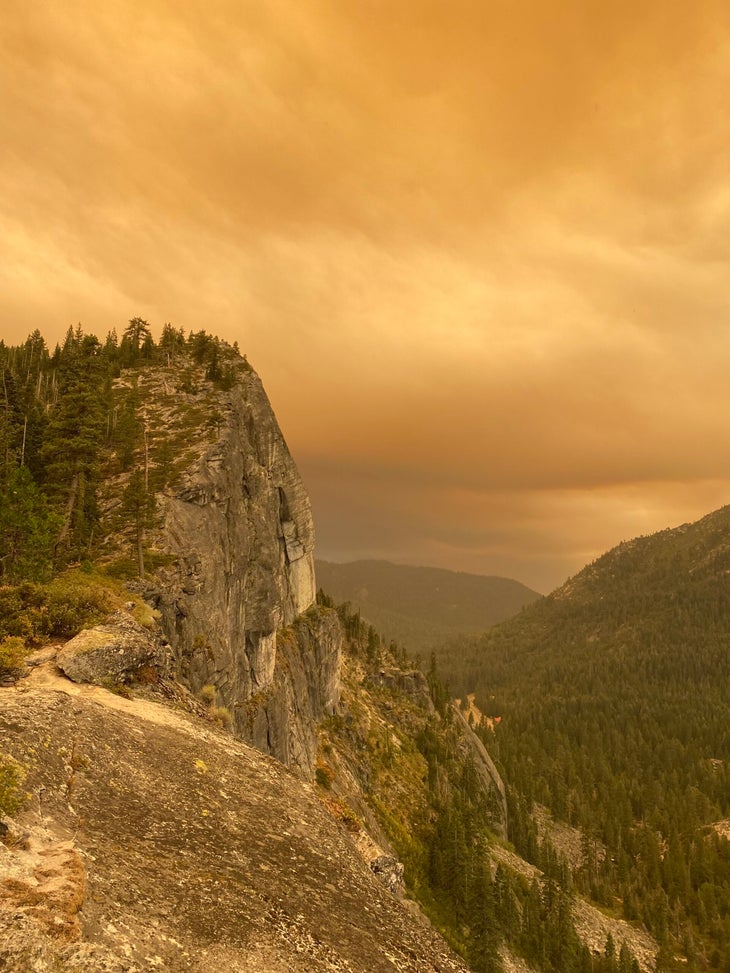
Petch Pietrolungo, owner of Lover’s Leap Guides and local living in Strawberry, California, since 1993, was one of the main community members leading the post-fire recovery. Bushes had been razed from the earth, and fallen trees blocked paths in all directions. The Forest Service had begun to clean up official trails—but climbing approaches weren’t considered part of that domain and they were stretched for funding anyway. Pietrolungo and other locals took it upon themselves to rebuild the approaches, removing debris and lining them with rocks to discourage social trails.
But the fire’s effects still linger. Pietrolungo says that, now, the major hazard at Lover’s Leap is falling old growth trees. During strong winds, these massive tree trunks are snapping 20 feet up. Pietrolungo estimates these trees could be a hazard for the next five to 10 years.
Wildfires can also cause significant rock fall, erosion, and even landslides. While land management agencies have the expertise and experience to address natural hazards—and indeed are required to on official trails—due to staffing and funding limitations, natural hazard mitigation can result in extended closure periods.
And then there is the intangible. Wildfires can result in what New Mexico climber Josh Smith calls a barren “moonscape.” Not only is the plant life gone, but so too are the animals who depended on it. More than safety concerns of falling rock or crisped corpses of trees, the barrenness can lend itself to a certain existential horror.
Rock Integrity
In 2022, the world-famous climbing in Oliana, Spain, suffered one of the worst fires our community has ever seen: the wall of sculpted, featured warm-ups were reduced to flaky choss, and classic testpieces like Crimptonite (8b+), T1 Full Equip (8b+), and Mishi (8b) were all so damaged developers didn’t know if they could ever return to their original brilliance. Oliana’s destruction was due to thermal spalling—the limestone had gotten so hot that weak features of rock (which are generally the protrusions that make for the best handholds and feet) had flaked off.
A study published in 2023 by Pablo Yeste-Lizán and fellow researchers compared the fire impacts in Oliana to another 2019 fire in Spain that damaged a granite crag near Madrid called Cadalso de los Vidrios. The extreme level of spalling that happened in Oliana, and indeed how high up on the routes this mechanical change to the rock was found, was very unique. According to the study, “The climbing walls [in Oliana] are located on the top of a steep slope with upward winds. This generated a “chimney” effect during the fire, which projected a hot stream toward the upper parts of the wall, so the effects of thermal spalling appear higher in the wall, up to 30 to 40 meters high.”
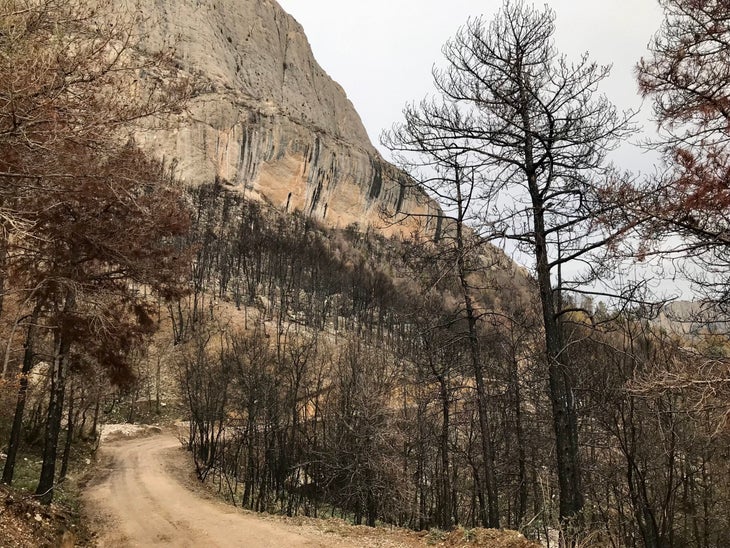
Despite how dire it seemed at first, climbers can be extremely resourceful. After I heard of Michaela Kiersch’s impressive onsight of Crimptonite in 2024, I had to check back in with Chris Frick, one of the climbers leading the recovery effort at Oliana. Was Crimptonite climbable again?
Frick reported that the original line isn’t possible anymore, at least not at 8b+/14a. Jorg Verhoeven bolted a variation by using the bouldery start of T1 Full Equip (miraculously unaffected) and traversing into Crimptonite. Kiersch onsighted this variation. The original start has had its hardware replaced, but due to missing holds it is considered “an ugly project at a very high level.” No one has cleaned or re-bolted the warm-ups, and they remain unclimbable.
The extensive level of rock damage is also related to the very nature of the rock. Yeste-Lizán’s study notes that “limestone may be more impacted by fire due to the conversion of aragonite to calcite, the thermal degradation of organics, and the expulsion of water.” In other words, limestone quickly heats up, loses water, and flakes off.
But other rock types can be affected by high temperatures caused by wildfires as well. According to the same study, while granite can be more resistant to fire, it too can lose strength, change in color, and peel or crack. And during the Las Conchas Fire that swept through Cochiti Mesa, New Mexico, in 2011, various desert face climbs, composed of a soft stone called Bandelier Tuff, were made utterly unclimbable. Local climber Mike Tritt went on a scouting mission after the fire, and reported on Mountain Project: “The fire was hot enough to separate the layers of patina from the rock. Without the patina I doubt there is anything solid enough to climb.”
Hardware Integrity
How wildfires can and do impact hardware integrity is the trickiest and most specialized consideration after a wildfire—and the knowledge out there is sparse at best.
For Bobby Hutton at HowNOT2, a gear retailer known for its extensive break-testing videos, his main concern with bolts, of any kind, that have been through a wildfire is not how high heats might impact the bolt’s strength, but rather how such heats could obliterate corrosion resistance properties—making fire impacts a long term problem for hardware, rather than an immediate risk. Hutton has experienced the dire impacts of wildfires himself: “The Caldor fire in 2021 burned my home and many of the crags I love. Of the 15 or so crags [where] I’ve done development or rebolting, 12 have been affected by wildfire.”
After his home burned, he recovered several brand new hangers that had been exposed to heats estimated at above 1763 degrees Fahrenheit. When he tested these rusted hangers, they performed well under pull tests, breaking at forces well above what they were originally rated to fail at. But he still had concerns about the long term corrosion resistance of the bolts. What good was the strength of the hanger now, if it would rapidly corrode in a few years?
In the real-life example of Oliana, when Yeste-Lizán and fellow researchers anchor-tested bolts on various parts of the affected wall, the results showed the bolts’ strength to be in good condition, despite oxidation. Of greater concern was how rock spalling and weakness interacted with hardware integrity. In several instances, rock immediately around or behind the bolt had chipped and spalled off, leaving some of the bolt itself exposed, and the hanger no longer flush with the rock.
Watch route developers in Oliana assess the flaky, burnt stone with wall hammers. Video courtesy of Chris Frick.
Frick certainly noticed these concerns, and his rebolting effort was comprehensive. Though he prioritized oxidized hangers and any bolts with spalling nearby, he also took no chances: “If you start to rebolt, you do the whole line.”
The question of whether glue-in bolts can melt at high temperatures is also not fully settled. Hutton reports that some types of adhesive used by climbers are rated to deal with fire. Others don’t have that rating. Until fully tested, and when the type of glue used is unknown when inspecting a wildfire-affected glue-in, it is better to be safe rather than sorry. As Hutton says, “In bolt replacement there has been a long term theory that you could use a torch to soften the adhesive and remove the bolt. We have tested it and it is possible with certain types of glue, but far from practical—we saw lots of damage to the rocks before the heat penetrated deep enough to weaken the glue. So wildfire damage to glue-ins is possible but I would expect to see rock damage first.”
With the 2011 Las Conchas fire at Cochiti Mesa and surrounding areas, another consideration was the fire damage to traditional anchors, like trees and existing webbing. After the Lover’s Leap fire, Pietrolungo found a handful of gear that had been dropped from climbs into the now nonexistent bushes, all burnt to a crisp, and evidence that fixed or stuck gear would also dramatically change in character after a fire.
In the relatively minor case of the Clear Creek crags in the burn zone of the Goltra Fire, the JCOS team asked an anonymous local route developer to do an unofficial evaluation of the hardware at the affected crags. While the generous volunteer did not see any damage obvious to the naked eye—likely meaning that the fire did not get hot enough to oxidize any of the hangers or cause spalling of rock—with no standardized process, the evaluation was inherently limited and informal. Perhaps it’s time for more than that.
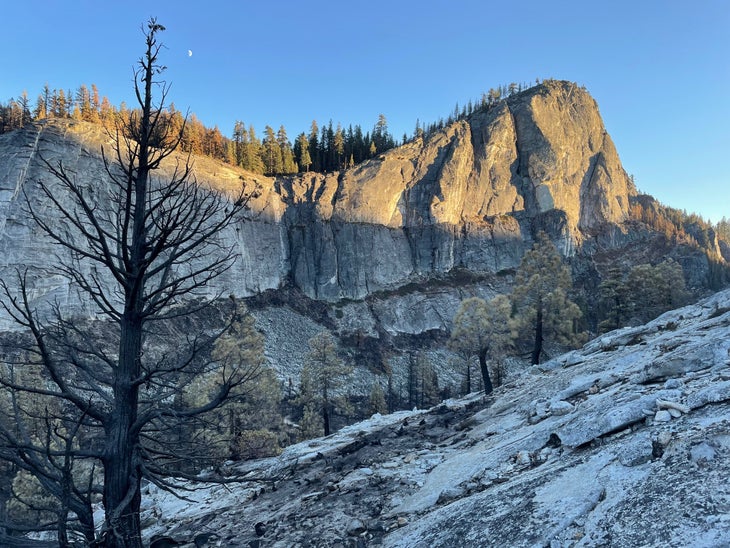
***
Wildfires are an increasing risk to gateway communities and the crags we love. One 2016 study found that fire burn area in the US has doubled in the last half century, in large part due to climate change and legacies of fire suppression. While fire mitigation strategies have been extensively discussed elsewhere, fire recovery processes in the specific context of climbing and safety have not. Because climbing causes so many tricky liability questions for land managers and climbing communities, there is also frequently a division or confusion about who is responsible for evaluating crags after a wildfire. While most climbers I talked to about this topic had positive relationships with rangers and land managers, they weren’t interested in giving already underfunded land agencies any further burdens in exchange for a more regulated fire recovery process. But then these other elements of crag safety are left to the climbing community to address on a volunteer basis. As with Oliana, the recovery of specific climbs might be left to the whims of volunteers. And what if no volunteer rises from the ashes?
It left me wondering: with scraps of knowledge buried in the brains of our generous developers, gear testers, and the local crag rat, what would it take to formalize a framework, conduct more comprehensive testing, collect scattered knowledge, and better equip our communities?
The post What Happens to Crags After a Wildfire? appeared first on Outside Online.











